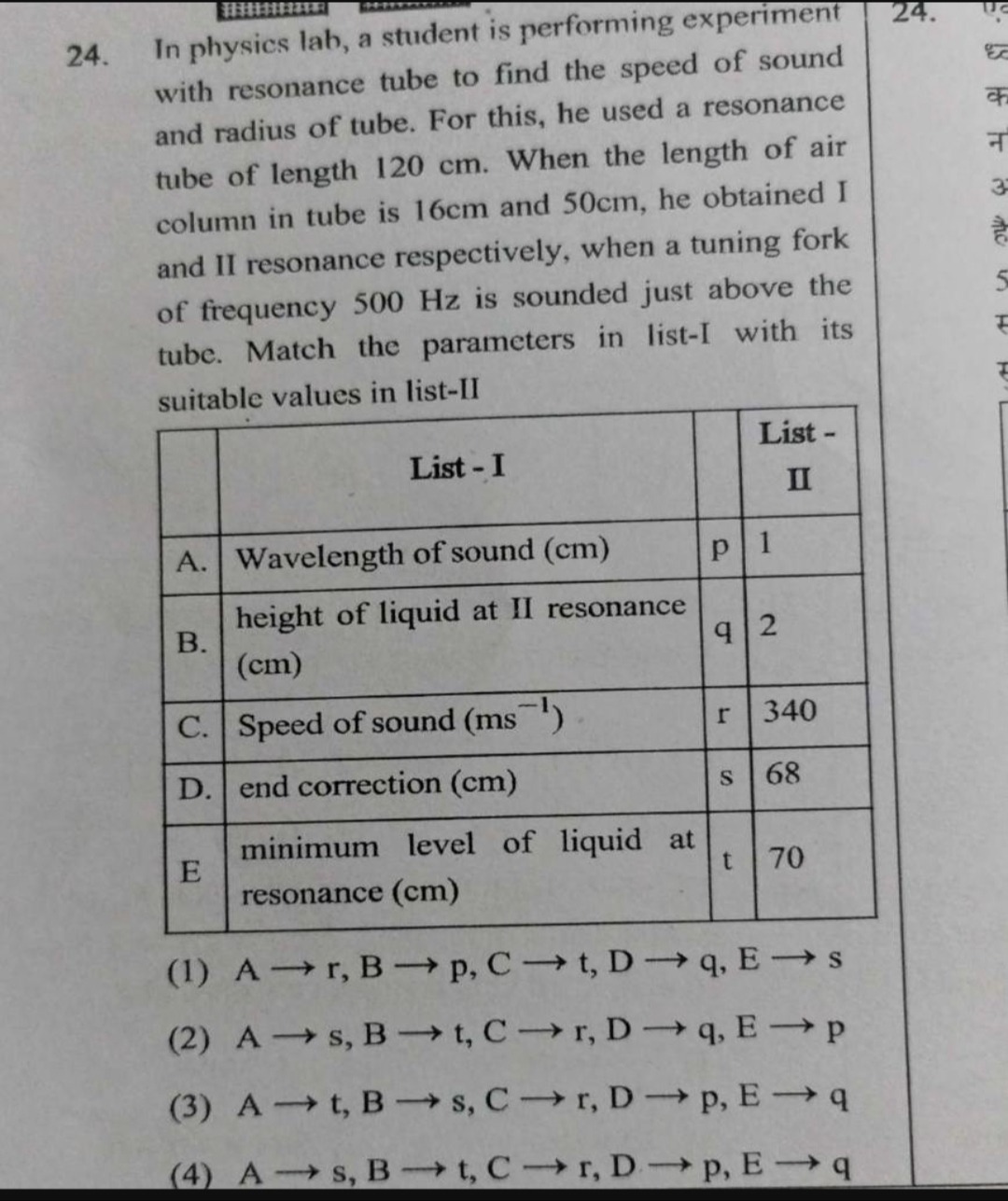Question
Question: In physics lab, a student is performing experiment with resonance tube to find the speed of sound an...
In physics lab, a student is performing experiment with resonance tube to find the speed of sound and radius of tube. For this, he used a resonance tube of length 120 cm. When the length of air column in tube is 16cm and 50cm, he obtained I and II resonance respectively, when a tuning fork of frequency 500 Hz is sounded just above the tube. Match the parameters in list-I with its suitable values in list-II

A. Wavelength of sound (cm) | p
B. height of liquid at II resonance (cm) | q
C. Speed of sound (ms⁻¹) | r
D. end correction (cm) | s
E | minimum level of liquid at resonance (cm) | t
(1) A→r, B→p, C→t, D → q, E→ s
(2) A→s, B→t, C→r, D → q, E → p
(3) A→t, B→s, C→r, D → p, E → q
(4) A→s, B→t, C→r, D→ p, E → q
A→s, B→t, C→r, D→ p, E → q
Solution
The resonance tube acts as a closed organ pipe. The conditions for resonance are given by l+e=(2n+1)4λ. For I resonance (l1=16 cm, n=0): 16+e=4λ For II resonance (l2=50 cm, n=1): 50+e=43λ Subtracting the first from the second: 34=42λ=2λ, so λ=68 cm. Substituting λ into the first equation: 16+e=468=17, so e=1 cm. Speed of sound v=fλ=500 Hz×68 cm=34000 cm/s=340 m/s. Height of liquid at II resonance = Total length - length of air column = 120 cm−50 cm=70 cm. The next resonance after l2=50 cm (n=1) is for n=2: l3+e=45λ⟹l3+1=45×68=85⟹l3=84 cm. Water level = 120−84=36 cm. The next resonance for n=3: l4+e=47λ⟹l4+1=47×68=119⟹l4=118 cm. Water level = 120−118=2 cm. The minimum level of liquid at resonance is 2 cm. Thus, A→68 cm (s), B→70 cm (t), C→340 m/s (r), D→1 cm (p), E→2 cm (q).
